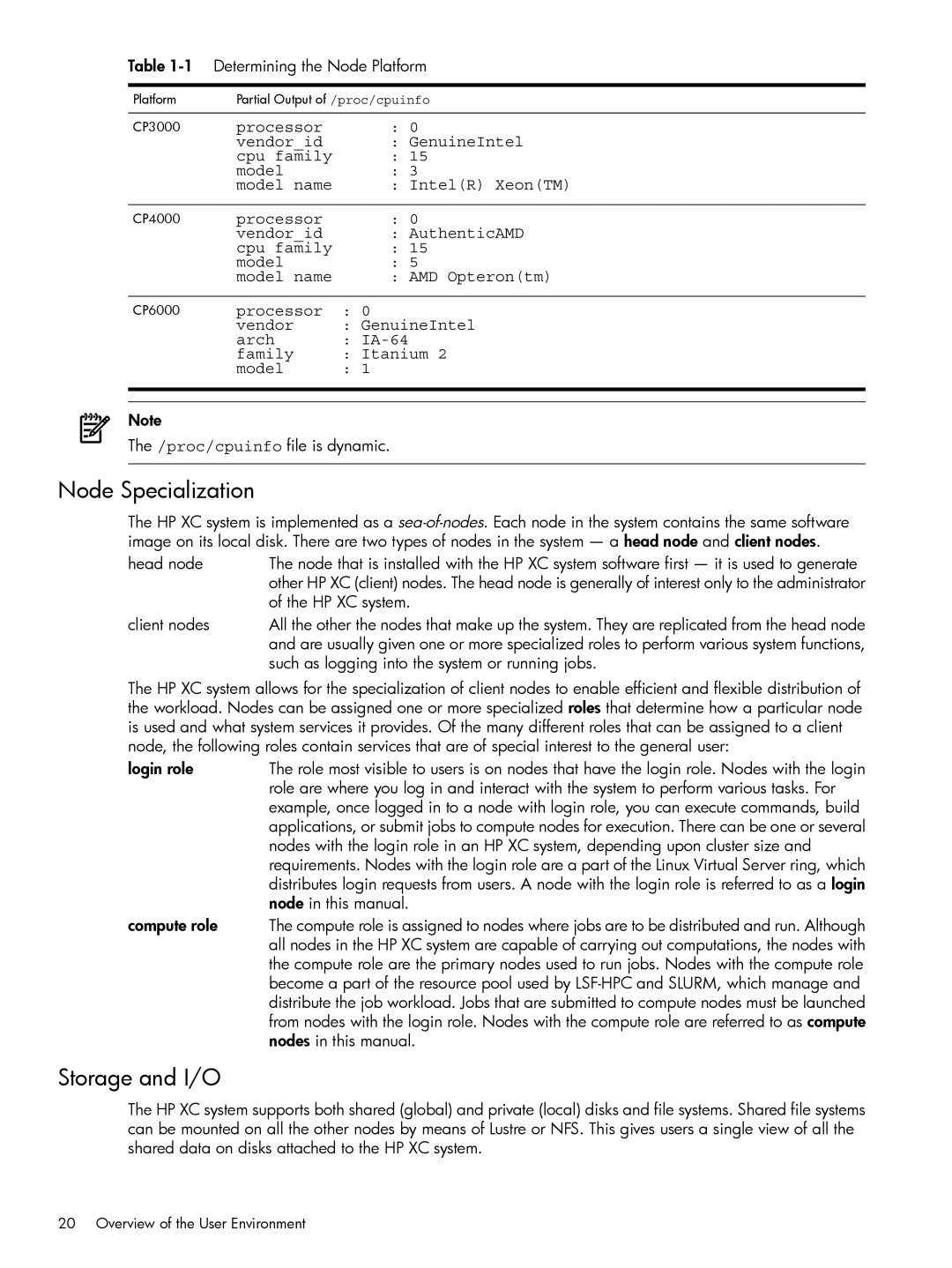
Table 1-1 Determining the Node Platform
Platform | Partial Output of /proc/cpuinfo | |
CP3000 | processor | : 0 |
| vendor_id | : GenuineIntel |
| cpu family | : 15 |
| model | : 3 |
| model name | : Intel(R) Xeon(TM) |
CP4000 | processor | : 0 |
| vendor_id | : AuthenticAMD |
| cpu family | : 15 |
| model | : 5 |
| model name | : AMD Opteron(tm) |
CP6000 | processor | : 0 |
| vendor | : GenuineIntel |
| arch | : |
| family | : Itanium 2 |
| model | : 1 |
Note
The /proc/cpuinfo file is dynamic.
Node Specialization
The HP XC system is implemented as a
head node | The node that is installed with the HP XC system software first — it is used to generate |
| other HP XC (client) nodes. The head node is generally of interest only to the administrator |
| of the HP XC system. |
client nodes | All the other the nodes that make up the system. They are replicated from the head node |
| and are usually given one or more specialized roles to perform various system functions, |
| such as logging into the system or running jobs. |
The HP XC system allows for the specialization of client nodes to enable efficient and flexible distribution of the workload. Nodes can be assigned one or more specialized roles that determine how a particular node is used and what system services it provides. Of the many different roles that can be assigned to a client node, the following roles contain services that are of special interest to the general user:
login role | The role most visible to users is on nodes that have the login role. Nodes with the login |
| role are where you log in and interact with the system to perform various tasks. For |
| example, once logged in to a node with login role, you can execute commands, build |
| applications, or submit jobs to compute nodes for execution. There can be one or several |
| nodes with the login role in an HP XC system, depending upon cluster size and |
| requirements. Nodes with the login role are a part of the Linux Virtual Server ring, which |
| distributes login requests from users. A node with the login role is referred to as a login |
| node in this manual. |
compute role | The compute role is assigned to nodes where jobs are to be distributed and run. Although |
| all nodes in the HP XC system are capable of carrying out computations, the nodes with |
| the compute role are the primary nodes used to run jobs. Nodes with the compute role |
| become a part of the resource pool used by |
| distribute the job workload. Jobs that are submitted to compute nodes must be launched |
| from nodes with the login role. Nodes with the compute role are referred to as compute |
| nodes in this manual. |
Storage and I/O
The HP XC system supports both shared (global) and private (local) disks and file systems. Shared file systems can be mounted on all the other nodes by means of Lustre or NFS. This gives users a single view of all the shared data on disks attached to the HP XC system.
20 Overview of the User Environment
